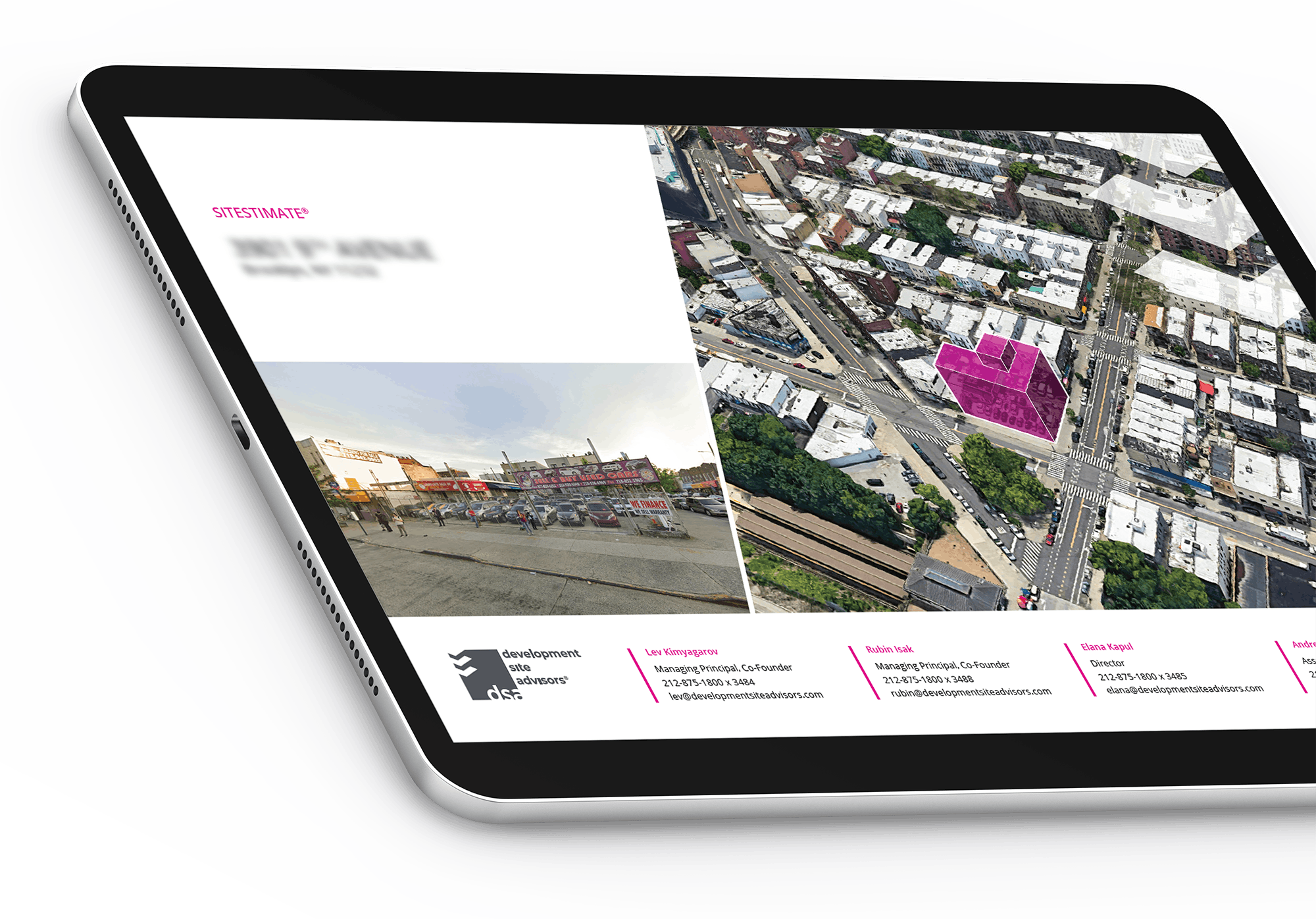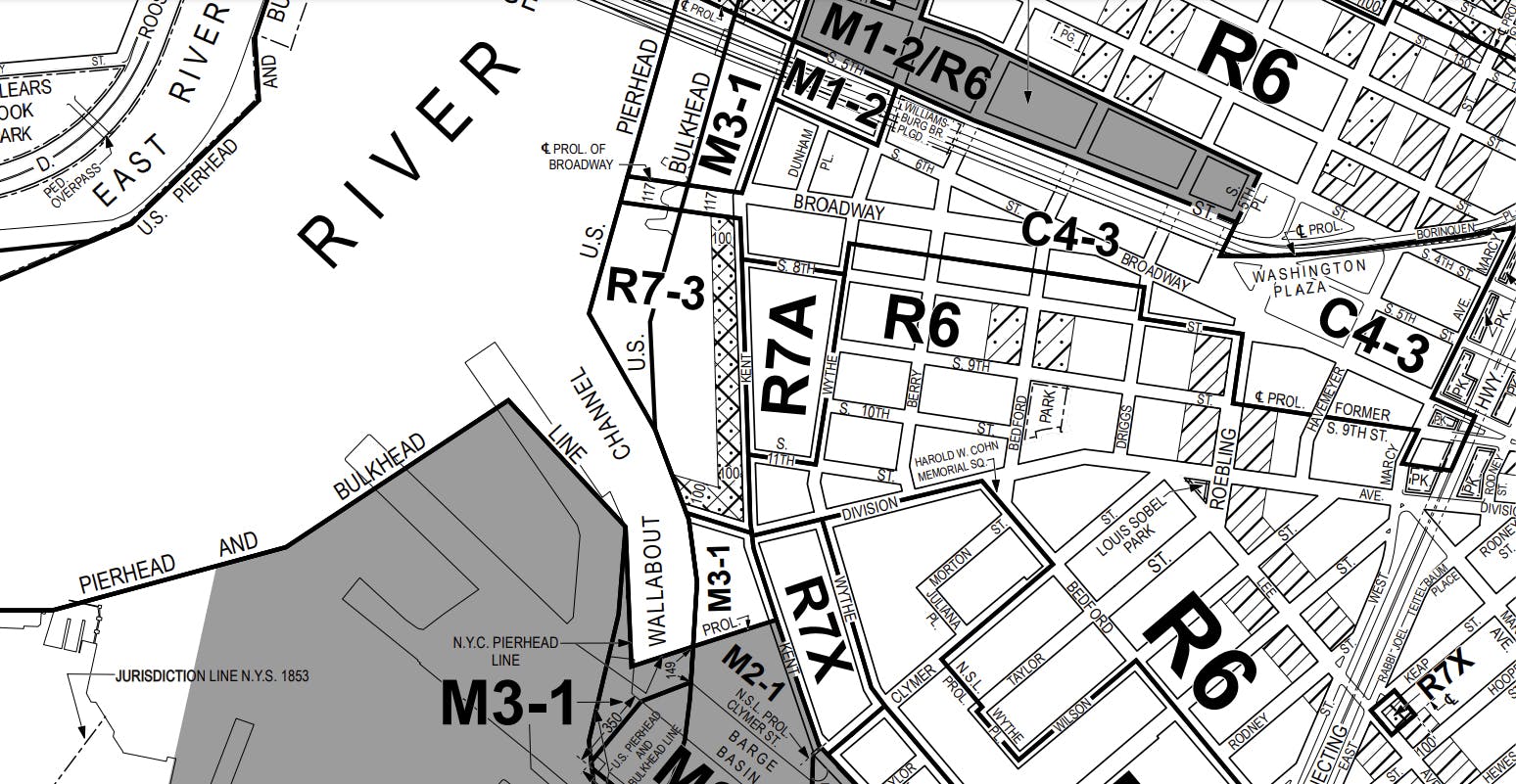Development Checklist
Development Site Advisors®
Land Survey
A land survey is a drawing of the property that shows its dimensions, boundaries, topography, utilities, easements, and other relevant information. A land survey is essential for designing and permitting property development. You should always get a complete architectural survey with spot elevations before starting a project.
Deed Restrictions and Easements
Deed restrictions and easements are legal limitations on the use and development of a property. They can be imposed by previous owners, neighbors, government agencies, or utility companies. They can affect the size, shape, height, design, and function of a building. You should always do a full title search and review any deed restrictions and easements before purchasing a property.
"In the dynamic landscape of New York City's real estate, the secret to successful land and development sales is a deep, nuanced understanding of each property's unique characteristics and potential. It's about more than just transactions; it's about shaping the city's future, one development at a time."
Lev Kimyagarov-Managing Principal, Co-Founder at Development Site Advisors®
Zoning Analysis
- All properties in New York City have its own zoning district that will govern the bulk, use and parking requirements. Zoning analysis is needed to obtain a development permit from the Department of Building (DOB). The analysis shows the permitted use, floor area ratio (FAR), lot coverage, density, height, level of yards and parking requirements of a zoning lot.
- Some properties are also located on Special Purpose District that have additional or modified zoning rules to achieve specific goals or objectives. It is crucial to conduct a thorough zoning analysis to understand the potential implications and benefits of the zoning rules and regulations applicable to the property.
Development Rights and Air Rights
Development rights are the maximum amount of floor area that can be built on a property according to the zoning regulations. Air rights are the unused development rights that can be transferred to or from adjacent properties. You should always check the zoning district, the floor area ratio, and the previous air rights deals of a property to determine its development potential. You should also look for opportunities to buy or sell air rights to increase the value of your property.
Grandfathered Conditions and Zoning Changes
Grandfathered conditions are aspects of a property that do not comply with the current zoning or building codes but are allowed to remain because they existed before the codes were enacted. A property should be verified whether it has any grandfathered conditions and how they affect your project. You should also check if there are any proposed zoning changes that may impact on your property in the future. Both grandfathered conditions and future zoning changes can be advantageous or disadvantageous for a property development.
Landmarks and Historic Districts
Landmarks and historic districts are properties or areas that have been designated by the Landmarks Preservation Commission (LPC) for their architectural, historical, or cultural significance. Landmarks and historic districts have strict regulations on any alterations, additions, or demolitions that may affect their appearance or character.
Violations and Penalties
Violations are citations issued by various city agencies for non-compliance with the zoning, building, fire, health, or environmental codes. Violations can result in fines, penalties, liens, or stop work orders. Violations on a property need to be checked and corrected as soon as possible. You should also be aware of the possibility of getting a violation penalty waiver if you are a bona fide purchaser of a property with existing violations.
Environmental Site Assessment
An environmental site assessment (ESA) is a process of investigating the environmental conditions of a property. It can reveal any contamination, air emissions, noise levels, or other hazards that may affect the development. An ESA typically consists of three phases: Phase I is a preliminary review of the property history and records, Phase II is a testing and sampling of the site, and Phase III is a remediation plan if needed. ESA should be conducted early in the process to avoid surprises and liabilities.
Market Analysis and Proforma
- Market analysis and proforma are the financial tools to evaluate the profitability and feasibility of a property development. Market analysis is the process of researching and comparing similar properties in the area to determine the likely income and expenses of your project. Proforma is the projection of the revenues, costs, and returns of your project over a period of time. Market analysis and proforma projections will set expectations for a running property and whether it can meet certain goals for property owners or buyers.
- These are some of the most important factors to consider when evaluating a property for development in New York City. However, every property is unique and must be assessed on its own merits. Consultations with professional brokerage, architect, engineer, lawyer, and accountant are vital before making any decisions. Property development is a complex and challenging endeavor, but it can also be rewarding and profitable if done right.
- At Development Site Advisors®, we know zoning and we specialize in development sites. We offer valuable resources, including our proprietary Sitestimate® for a comprehensive property valuation, Sitestimate®+ for a detailed development proforma and Due Diligence Accelerator Package® for comprehensive information to assists developers and investors to appropriately evaluate any site and make an informed decision in a timely manner. Feel free to reach out to us and let us be a valuable resource to you.


